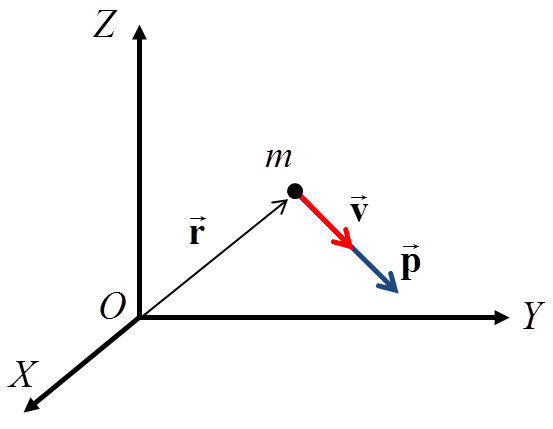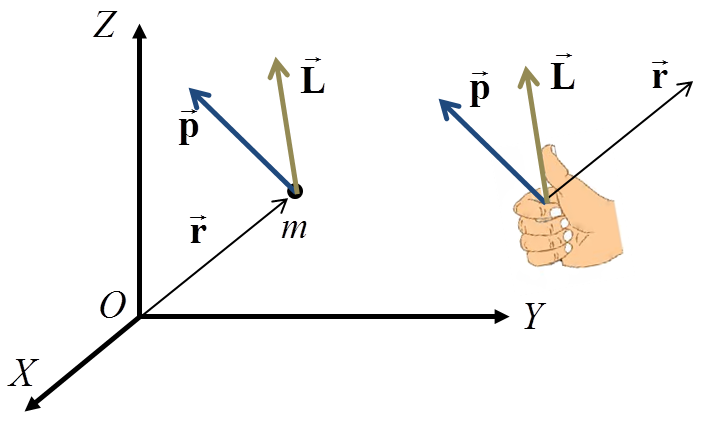Particle dynamics#
Linear momentum#
The linear momentum of a particle is a vector magnitude given in an inertial reference frame:

Angular momentum of a particle#
The angular momentum of a particle with respect to a point (\(O\)) is:

Equations of motion for a particle#
For a single particle, we have a system of differential equations:
Note these amounts to six equations for 3D point-like particles. However, they are redundant, and solving just three of them is enough.
Picking the first subset (Newton’s second law): Since \(\dot{ \mathbf{p} } = \frac{d}{dt}( m \mathbf{v} ) = \frac{d}{dt}( m \dot{\mathbf{r}} ) = m \ddot{\mathbf{r}} \):
Which is a system of 3 ordinary differential equations (ODE):
This ODE system can then be solved analytically (ideal cases only), or, more realistically, using numerical integrators: Euler, Trapezoidal, etc.